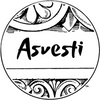DIY Tips for Choosing Limewash Colors in the Philippines
DIY Tips for Choosing Limewash Colors in the Philippines is a smart way to update your space without hiring a contractor. This article walks you through the basics of Asvesti Limewash Paint and how to handle a full DIY project in the Philippines. DIY Tips for Choosing Limewash Colors in the Philippines sets the tone in the very first step by focusing on simple prep, easy tools, and a breathable finish that suits the tropical climate. If you are new to limewash, keep reading and you will see how the method works and why it looks so natural on walls and exteriors.
Limewash is made from natural lime and minerals. It cures by absorbing carbon dioxide and bonding with the plaster, brick, or stone beneath. The result is a soft, matte surface with gentle variation so the wall never feels flat. In the Philippines, houses deal with humidity, rain, and salt air in coastal areas. Because limewash is breathable, it helps moisture pass through instead of getting trapped behind paint. That reduces the chance of peeling and damp spots and keeps surfaces looking calm and solid over time.
Good preparation makes the job easier. Start by clearing the room and covering floors. Brush away dust, wipe grease, and repair loose plaster. If a wall is previously painted with acrylic, ask your supplier about a mineral primer that improves grip. Right before you paint, lightly mist the wall with clean water. This moisture helps the lime particles settle and keeps brush strokes workable while you move across the surface.
Application is beginner friendly. Use a wide masonry brush with natural bristles. Move in broad crisscross strokes and avoid loading too much paint at once. The first coat often looks patchy and that is normal. Let it dry and apply a second coat, which blends the movement and deepens the tone. If you want a lighter, more translucent look, thin the limewash with a little clean water and always test on a small area before continuing.
Color choice changes the mood of the room. For bright homes in the Philippines, soft neutrals like warm white, cream, and light gray keep spaces cool and airy. If you want drama, consider clay, olive, or charcoal. Limewash never looks shiny, so even deeper shades feel relaxed. Paint a sample square and check it in morning light, afternoon light, and evening light because limewash shifts gently during the day.
Small rooms respond well to limewash because variation adds depth without clutter. In condos, a single feature wall can create a focal point behind a bed or sofa. Tape clean edges, keep a damp cloth handy for quick wipe downs, and work in sections so you can step back and judge the overall movement. If a patch looks strong, feather the area with a damp brush while it is still workable. The forgiving nature of limewash gives DIY painters room to learn and adjust.
Exterior projects need a bit of timing. Pick a stretch of clear weather so your first coat can dry without surprise rain. On mineral surfaces like rendered walls, brick, or natural stone, limewash bonds well and ages into a gentle patina. A third coat can be added for extra saturation after the second coat has fully dried. Rinse exteriors with clean water from time to time to keep dust and salt off the surface.
Avoid common mistakes and you will get better results. Do not skip cleaning. Do not paint in direct midday sun. Respect drying time between coats so the finish cures evenly. If you are covering a very dark color, plan on an extra coat or two. Keep a simple log of your water mix, brush type, and number of coats so you can repeat a look you love in other rooms.
Asvesti Limewash Paint is low odor and mineral based, which supports healthier indoor air and easier maintenance. If you ever want to refresh the look, clean the wall, re-wet the surface, and add a new coat without heavy sanding. For more photos, shade ideas, and DIY tips for projects across the Philippines, visit Asvesti on Facebook. Start with a small test wall, stay patient through the first coat, and enjoy the timeless character that limewash brings to your home.
